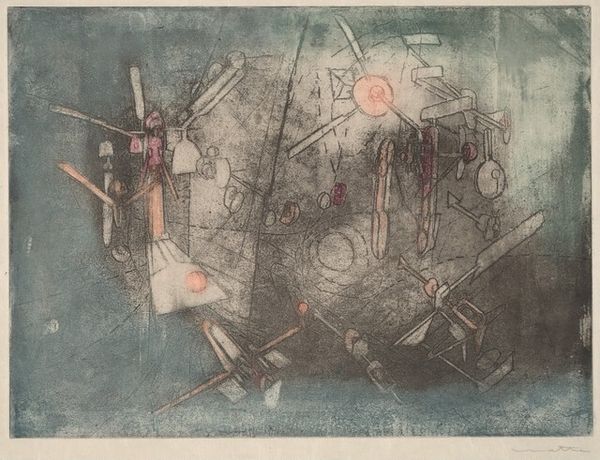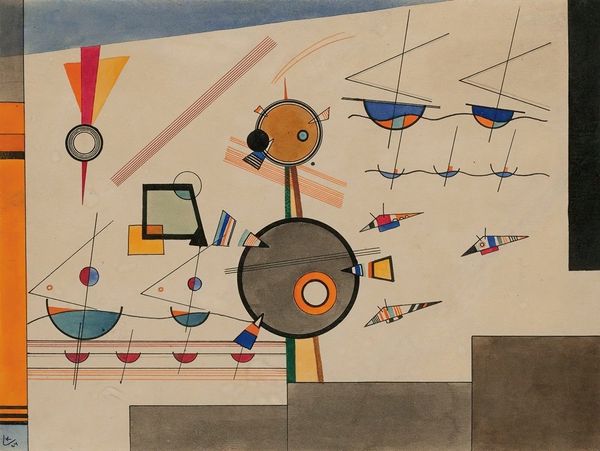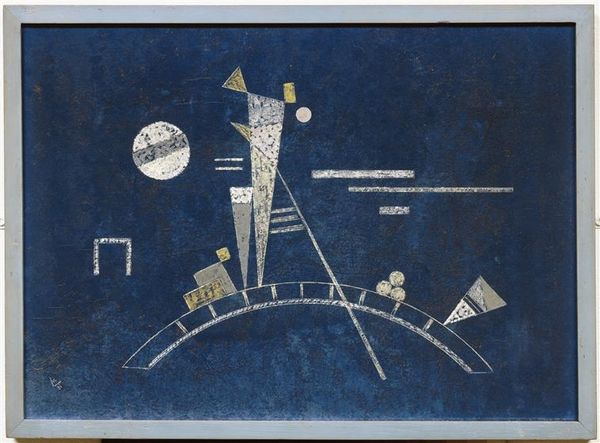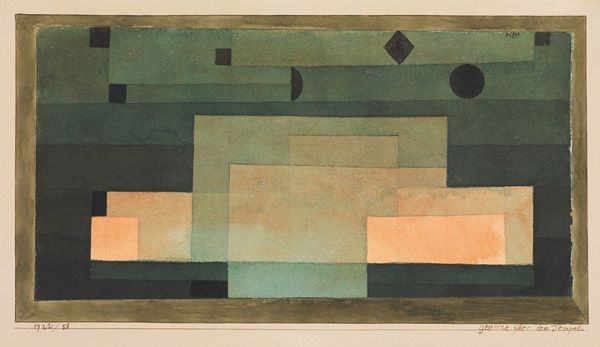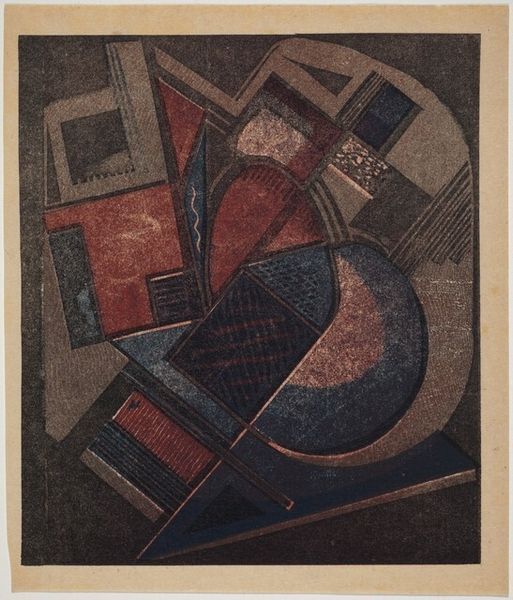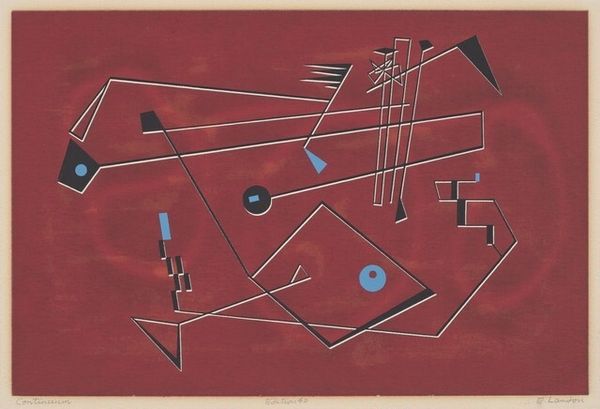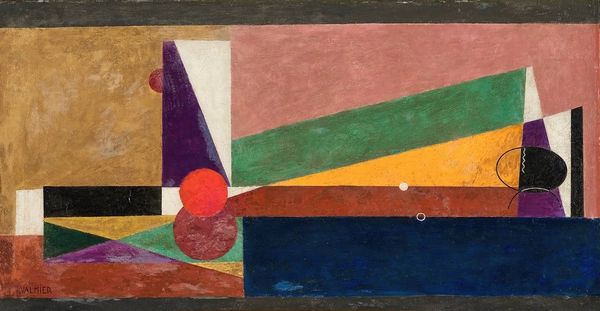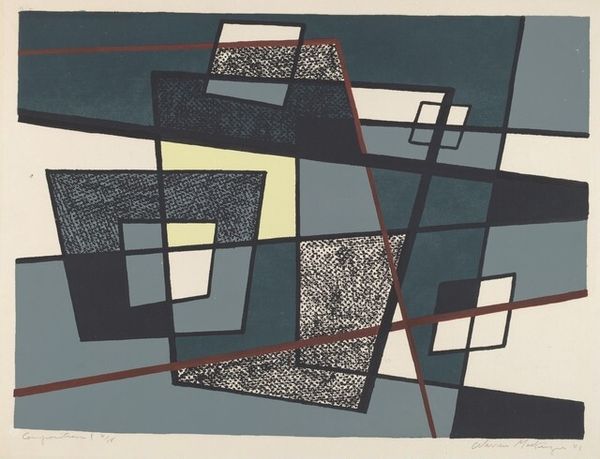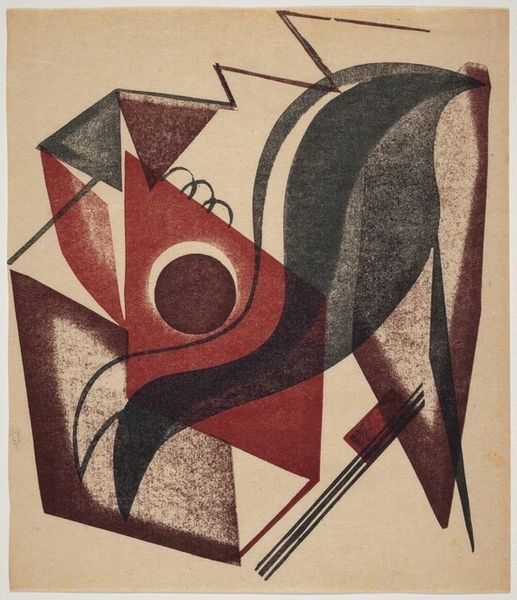
# print
#
abstract
#
geometric
#
geometric-abstraction
#
modernism
Copyright: National Gallery of Art: CC0 1.0
Curator: Let's turn our attention to Charles William Smith’s "Light Moving," a print created in 1940. Editor: It strikes me as somewhat melancholic. The muted colors and layering of geometric shapes create a sense of unease or perhaps constrained movement. Curator: Interesting observation. Formally, Smith utilizes a fairly limited color palette and a strong interplay between positive and negative space. The texture achieved through the printmaking process is quite noticeable; look closely at the background, you can see subtle variations that add depth. Editor: Yes, but what context was Smith operating within? The 1940s saw art become increasingly politically charged. Was "Light Moving" perhaps a subtle commentary on the restrictions and disruptions caused by global conflict, veiled behind the seemingly detached language of abstraction? The title alone hints at change, transformation... possibly even displacement. Curator: Perhaps, but I am also struck by how Smith seems more interested in the formal challenge of representing movement and light using solely abstract forms. The composition feels like a carefully balanced equation; consider how the large red circle dominates the upper space while various geometric shapes—rectangles, lines, and another circle—interact in the lower section. It’s about the dynamism created within the image itself. Editor: I see the composition and your point about dynamism; I do, but abstract art doesn't exist in a vacuum. I find myself drawn to considering the undercurrents of the work...especially regarding gender and class during this tumultuous decade. Who was art for, who could afford to ponder shapes when entire societies were being reshaped? Smith would certainly be aware. Curator: Fair point. Nevertheless, let us not diminish Smith’s skill in orchestrating these visual elements. It's this delicate equilibrium, not solely contextual forces, that commands my appreciation. Editor: It does create tension, certainly, in an evocative and deeply ambiguous way, even as the print appears static. Curator: Indeed, an ambiguity worth exploring. Editor: Absolutely. I hadn't considered it quite like that.
Comments
No comments
Be the first to comment and join the conversation on the ultimate creative platform.


